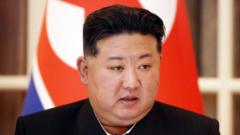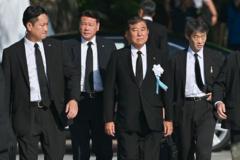June 25, 2025, marked a pivotal moment in UK defense policy when the country announced its decision to acquire 12 F-35A stealth fighter-bombers, allowing its military to once again have the ability to launch nuclear strikes from the air. This acquisition coincides with the NATO summit in The Hague, highlighting the urgency of enhancing collective defense capacities in response to rising global tensions.
The new F-35A aircraft will be capable of carrying both conventional and nuclear munitions, supplementing the UK's existing nuclear deterrent, which currently relies solely on Trident submarines capable of launching cruise missiles. This move mirrors similar capabilities held by France and aligns the UK closer to NATO's nuclear strategy amid ongoing concerns regarding the reliability of American nuclear commitments in the face of potential threats from Russia.
The British government described this as "the biggest strengthening of the U.K.’s nuclear posture in a generation," emphasizing the importance of modernizing its military forces. Additionally, Britain will join NATO’s airborne nuclear mission, integrating allied aircraft equipped with American B61 nuclear bombs stationed in Europe, thus enhancing the overall deterrent against Russian aggression.
Although the UK previously operated F-35B variants optimized for aircraft carrier operations, these jets lack the capability to deploy nuclear weapons. The introduction of the F-35A variants marks a significant re-establishment of Britain’s aerial nuclear role, which had been absent since the UK decommissioned its air-launched nuclear weapons after the Cold War.
This announcement not only reinforces the UK’s defense posture but also contributes to strengthening NATO's European component at a precarious time in international relations, where the need for a robust collective security mechanism is more critical than ever.
The new F-35A aircraft will be capable of carrying both conventional and nuclear munitions, supplementing the UK's existing nuclear deterrent, which currently relies solely on Trident submarines capable of launching cruise missiles. This move mirrors similar capabilities held by France and aligns the UK closer to NATO's nuclear strategy amid ongoing concerns regarding the reliability of American nuclear commitments in the face of potential threats from Russia.
The British government described this as "the biggest strengthening of the U.K.’s nuclear posture in a generation," emphasizing the importance of modernizing its military forces. Additionally, Britain will join NATO’s airborne nuclear mission, integrating allied aircraft equipped with American B61 nuclear bombs stationed in Europe, thus enhancing the overall deterrent against Russian aggression.
Although the UK previously operated F-35B variants optimized for aircraft carrier operations, these jets lack the capability to deploy nuclear weapons. The introduction of the F-35A variants marks a significant re-establishment of Britain’s aerial nuclear role, which had been absent since the UK decommissioned its air-launched nuclear weapons after the Cold War.
This announcement not only reinforces the UK’s defense posture but also contributes to strengthening NATO's European component at a precarious time in international relations, where the need for a robust collective security mechanism is more critical than ever.





















